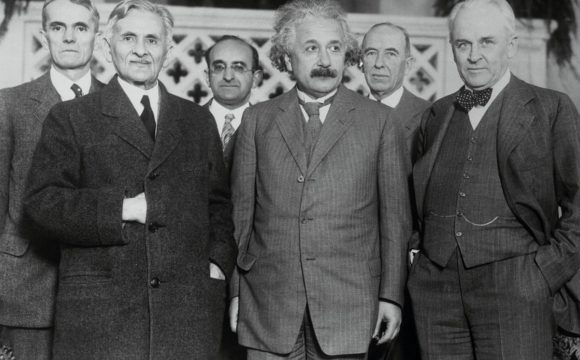William G. Kaelin Jr, Sir Peter J. Ratcliffe, and Gregg L. Semenza are the joint winners of the 2019 Nobel Prize in Physiology and Medicine. The Nobel Assembly at Karolinska Institutet Stockholm, Sweden announced the 2019 Nobel Prize in Physiology and Medicine to these three researchers for their revolutionary work in ‘How Cells Sense oxygen and adapt to changing oxygen availability’. The discovery of a cellular mechanism that responds to changing oxygen levels is the foundation to study many life-threatening diseases such as cancer, anemia and cardiac related diseases. The trio, worked hard for more than 20 years to study the cellular mechanism that controls the changing oxygen levels in the body.

(Image Source: https://www.elsevier.com/)
According to the Nobel assembly “the three researchers identified molecular machinery that regulates the activity of genes in response to varying levels of oxygen, their work paved the way for promising new strategies to fight anemia, cancer and many other diseases.”
Oxygen is the vital thing required by almost all living things to survive. Without oxygen, no one can survive. Cells need oxygen for proper functioning. The key role of oxygen is to convert food into energy. However, too much or a too-small amount of oxygen is dangerous for cell functioning. The prime function of oxygen is known for centuries but how cells control the changes in oxygen level was not known, until now.
At a cellular level, the amount of oxygen varies constantly. Our cells can understand it and make changes according to the fluctuation of oxygen around us. For example, we may feel short of breath at higher altitude or after an exhausting workout. In such cases, cells are required to adapt themselves with available oxygen. The adaptive process that enables the cell to adjust with available oxygen and make changes accordingly is known as “hypoxia response”.
In simple words, the hypoxia response indicates a low oxygen level and causes an increase in the levels of the hormone erythropoietin (EPO). EPO is synthesized in the kidney and essential in promoting the formation of red blood cells by the bone marrow.
The kidney cells are sensitive to oxygen levels in the blood that travels through the kidney. When oxygen levels are very low due to anemia or some other conditions, kidney cells increase the production and release of EPO in the blood.
Dr. Semenza and Dr. Ratcliffe independently carried out research on the EPO gene and its response to varying oxygen levels. Dr. Semenza’s study on genetically modified mice revealed that specific DNA segments present near the EPO gene were seen managing the hypoxia response. Dr. Semenza found a protein complex binding to the identified specific DNA segment. He named the complex as the hypoxia-inducible factor (HIF). He further discovered that HIF includes two different DNA binding proteins, HIF-1α and ARNT. Dr. Ratcliffe studied the oxygen-dependent regulation of the EPO gene. Both the investigators discovered that an oxygen-sensing mechanism is available across all the tissues in the body.
When Dr. Semenza and Ratcliffe were investigating the regulation of the EPO gene, cancer researcher William Kaelin, Jr. was studying an inherited syndrome, von Hippel-Lindau’s disease (VHL disease). VHL disease is a genetic syndrome caused by mutations in VHL gene leading to certain cancers. The studies of William Kaelin, Jr. found that the VHL gene is responsible for encoding certain proteins that prevent the beginning of cancer. The investigations of William Kaelin, Jr. also found that cancers cells are lacking the VHL gene but expressing high levels of hypoxia-regulated genes indicating a low level of oxygen. However, when the VHL gene was introduced again into cancer cells, the regular levels of the hypoxia gene were restored again. This study gave a very important hint demonstrating VHL is involved in the hypoxia response controlling mechanism.
The collaborative research work by the three researchers shows that cells respond quickly to change in oxygen level and try to adapt. The response through gene expression is correlated with change in oxygen level. Their work is going to be a great help while fighting cancer, anemia, cardiac diseases, and other diseases.
Know more about the 2019 Nobel Laureates in Medicine:
William G. Kaelin Jr: He Studied M.D.at Duke University in the U.S.A. Further studied at Johns Hopkins University and at the Dana-Farber Cancer Institute in Boston. He is a professor at Harvard Medical School in 2002 and runs his own research lab.
Sir Peter J. Ratcliffe: He Studied medicine at Gonville and Caius College at Cambridge University. He is a professor at the University of Oxford and set his own research group at Oxford.
Gregg L. Semenza: He obtained his B.A. in biology from Harvard University, Boston and MD/Ph.D. degree from the University of Pennsylvania, School of Medicine, and Philadelphia in 1984. He is a professor at Johns Hopkins University and started his own research unit.
References:
- https://www.nytimes.com/2019/10/07/health/nobel-prize-medicine.html
- https://www.elsevier.com/connect/celebrating-the-2019-nobel-laureates-with-free-access-to-their-research
- https://www.sciencedaily.com/releases/2019/10/191007095520.htm
- https://www.news18.com/news/world/explained-nobel-winning-discovery-of-how-cells-adapt-to-varying-oxygen-levels-and-why-its-important-2336695.html
- The Times of India 8th October 2019










